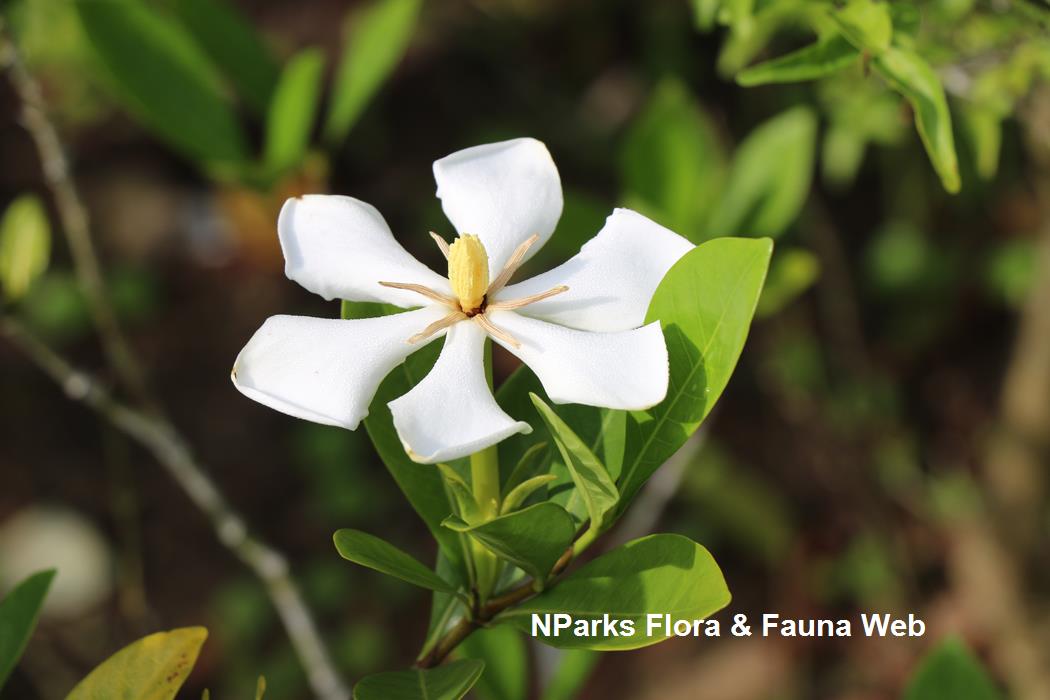
Name
Classifications and Characteristics
| Plant Division | Angiosperms (Flowering Seed Plants) |
|---|---|
| Plant Growth Form | Tree, Shrub |
| Mode of Nutrition | Autotrophic |
Biogeography
| Native Distribution | Zuzuland, Swaziland, southern Mozambique |
|---|---|
| Native Habitat | Terrestrial |
| Preferred Climate Zone | Tropical |
| Local Conservation Status | Non-native |
Description and Ethnobotany
| Growth Form | Multi-stemmed shrub, able to grow up 3 - 5 m tall. |
|---|---|
| Foliage | Leaves usually in whorls of 3, light green, oval shape, measuring about 2.5 - 4 cm long. |
| Stems | Smooth bark, whitish grey, sometimes branchlets have thick thorns. |
| Flowers | Solitary white flowers turning yellow upon aging, short-stalked with a long green tube measuring about 5 - 6 cm long. |
| Fruit | Large yellow fruit, pear-shaped, measuring about 4 - 5 cm long and 3 - 3.5 cm wide. |
| Habitat | Can be found in woodland and grassy plains. |
| Etymology | Genus Gardenia is named after Dr. Alexander Garden (1730 - 1791), an American doctor who also studied plants and animals. Species cornuta means horn-shaped. |
Landscaping Features
| Desirable Plant Features | Ornamental Flowers, Fragrant |
|---|---|
| Landscape Uses | Parks & Gardens, Small Gardens |
Fauna, Pollination and Dispersal
| Fauna Pollination Dispersal Associated Fauna | Butterfly-Attracting, Moth Food Plant |
|---|
Plant Care and Propagation
| Light Preference | Full Sun, Semi-Shade |
|---|---|
| Water Preference | Moderate Water |
| Plant Growth Rate | Moderate |
| Rootzone Tolerance | Well-Drained Soils |
| Propagation Method | Seed |
Foliar
| Mature Foliage Colour(s) | Green |
|---|
Floral (Angiosperm)
| Flower Colour(s) | White |
|---|
Fruit, Seed and Spore
| Mature Fruit Colour(s) | Yellow / Golden |
|---|
Image Repository
Others
| Master ID | 30949 |
|---|---|
| Species ID | 5335 |
| Flora Disclaimer | The information in this website has been compiled from reliable sources, such as reference works on medicinal plants. It is not a substitute for medical advice or treatment and NParks does not purport to provide any medical advice. Readers should always consult his/her physician before using or consuming a plant for medicinal purposes. |




